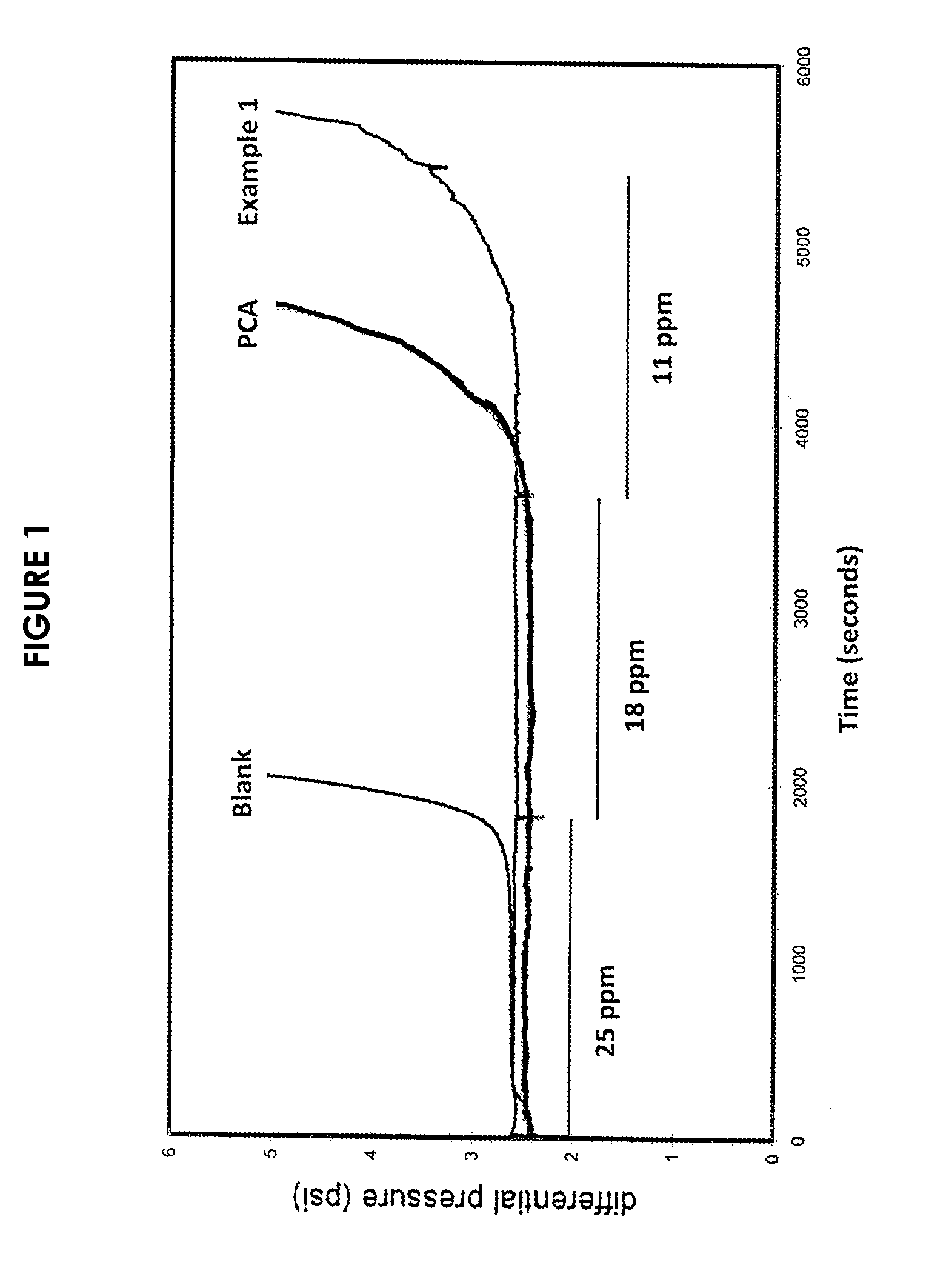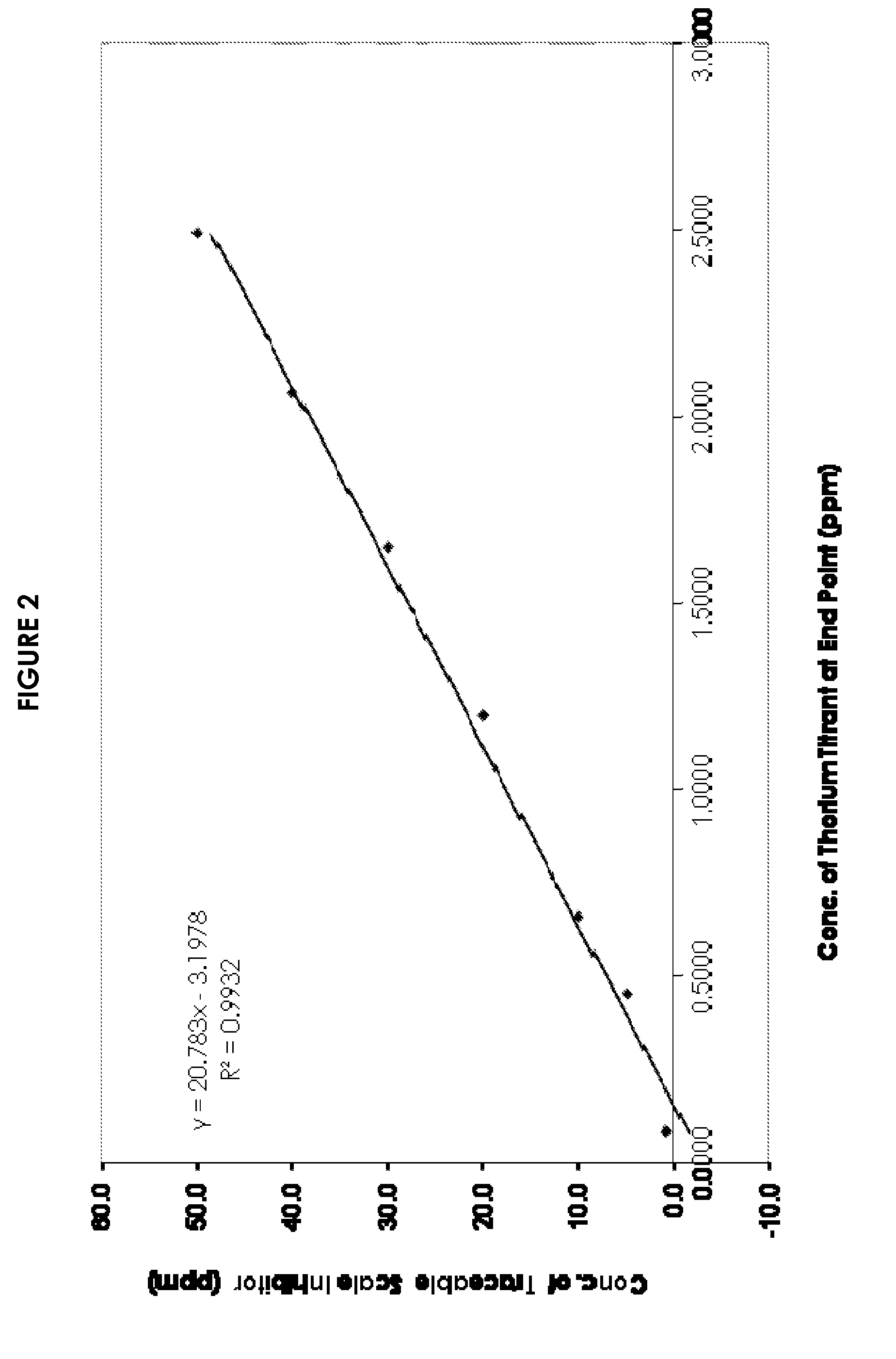Traceable polymeric scale inhibitors and methods of using such scale inhibitors
- Summary
- Abstract
- Description
- Claims
- Application Information
AI Technical Summary
Benefits of technology
Problems solved by technology
Method used
Image
Examples
example 1
[0085]Into a round bottomed flask equipped with two dropping funnels, reflux condenser, nitrogen inlet, temperature probe, and stirrer, there were charged 245.8 g deionized water and 0.78 g (0.0089 moles) sodium hypophosphite. While introducing nitrogen into the flask, the temperature was increased to 80° C. Then, 178 g of an aqueous solution of 52% acrylic acid (AA) and 11% maleic anhydride (MA) (a net content of acrylic acid of 93.0 g which is 1.29 moles, and a molar ratio of MA / AA of 7.5) and a 34.6% sodium persulfate solution were added simultaneously dropwise through separate dropping funnels over 1.5 hours. The molar ratio of the monomers and sodium hypophosphite is 162:1. The addition rates of the two vessels were: persulfate solution at 2.04 ml / min and MA / AA at 1.89 ml / min. After addition of the reactants was completed, the solution was aged for 1 hour at 80° C. and then was left standing for cooling to room temperature. Once cooled, 50% sodium hydroxide solution was added t...
example 2
[0086]A copolymer phosphinate was prepared by the method described in Example 1, except that a 35.2% sodium persulfate solution was added to the reaction mixture at a rate of 4.64 ml / min. The sodium salt of maleic acid / acrylic acid / phosphinate (MAAP) was obtained having 30% solids, pH of 2.71 and a number average molecular weight of 1500.
example 3
[0087]A copolymer phosphinate was prepared by the method described in Example 1, except that a 16.9% sodium persulfate solution was added to the reaction mixture at a rate of 0.95 ml / min. The sodium salt of maleic acid / acrylic acid / phosphinate (MAAP) was obtained having 30% solids, pH of 2.56 and a number average molecular weight of 3200.
PUM
| Property | Measurement | Unit |
|---|---|---|
| Fraction | aaaaa | aaaaa |
| Fraction | aaaaa | aaaaa |
| Fraction | aaaaa | aaaaa |
Abstract
Description
Claims
Application Information
 Login to View More
Login to View More - R&D
- Intellectual Property
- Life Sciences
- Materials
- Tech Scout
- Unparalleled Data Quality
- Higher Quality Content
- 60% Fewer Hallucinations
Browse by: Latest US Patents, China's latest patents, Technical Efficacy Thesaurus, Application Domain, Technology Topic, Popular Technical Reports.
© 2025 PatSnap. All rights reserved.Legal|Privacy policy|Modern Slavery Act Transparency Statement|Sitemap|About US| Contact US: help@patsnap.com



